第239章
Gasca, who did not affect a greater knowledge of military affairs than he really possessed, had given the charge of his forces to Hinojosa, naming the Marshal Alvarado as second in command. Valdivia, who came after these dispositions had been made, accepted a colonel's commission, with the understanding that he was to be consulted and employed in all matters of moment.7--Having completed his arrangements, the president broke up his camp in March, 1548, and moved upon Cuzco.
The first obstacle of his progress was the river Abancay, the bridge ever which had been broken down by the enemy. But as there was no force to annoy them on the opposite bank, the army was not long in preparing a new bridge, and throwing it across the stream, which in this place had nothing formidable in its character. The road now struck into the heart of a mountain region, where woods, precipices, and ravines were mingled together in a sort of chaotic confusion, with here and there a green and sheltered valley, glittering like an island of verdure amidst the wild breakers of a troubled ocean! The bold peaks of the Andes, rising far above the clouds, were enveloped in snow, which, descending far down their sides, gave a piercing coldness to the winds that swept over their surface, until men and horses were benumbed and stiffened under their influence. The roads, in these regions, were in some places so narrow and broken, as to be nearly impracticable for cavalry. The cavaliers were compelled to dismount; and the president, with the rest, performed the journey on foot, so hazardous, that, even in later times, it has been no uncommon thing for the sure-footed mule to be precipitated, with its cargo of silver, thousands of feet down the sheer sides of a precipice.8By these impediments of the ground, the march was so retarded, that the troops seldom accomplished more than two leagues a day.9 Fortunately, the distance was not great; and the president looked with more apprehension to the passage of the Apurimac, which he was now approaching. This river, one of the most formidable tributaries of the Amazon, rolls its broad waters through the gorges of the Cordilleras, that rise up like an immense rampart of rock on either side, presenting a natural barrier which it would be easy for an enemy to make good against a force much superior to his own. The bridges over this river, as Gasca learned before his departure from Andaguaylas, had been all destroyed by Pizarro. The president, accordingly, had sent to explore the banks of the stream, and determine the most eligible spot for reestablishing communications with the opposite side.
The place selected was near the Indian village of Cotapampa, about nine leagues from Cuzco; for the river, though rapid and turbulent from being compressed within more narrow limits, was here less than two hundred paces in width; a distance, however, not inconsiderable. Directions had been given to collect materials in large quantities in the neighborhood of this spot as soon as possible; and at the same time, in order to perplex the enemy and compel him to divide his forces, should he be disposed to resist, materials in smaller quantities were assembled on three other points of the river. The officer stationed in the neighborhood of Cotapampa was instructed not to begin to lay the bridge, till the arrival of a sufficient force should accelerate the work, and insure its success.
The structure in question, it should be remembered, was one of those suspension bridges formerly employed by the Incas, and still used in crossing the deep and turbulent rivers of South America. They are made of osier withes, twisted into enormous cables, which, when stretched across the water, are attached to heavy blocks of masonry, or, where it will serve, to the natural rock. Planks are laid transversely across these cables, and a passage is thus secured, which, notwithstanding the light and fragile appearance of the bridge, as it swings at an elevation sometimes of several hundred feet above the abyss, affords a tolerably safe means of conveyance for men, and even for such heavy burdens as artillery.10Notwithstanding the peremptory commands of Gasca, the officer intrusted with collecting the materials for the bridge was so anxious to have the honor of completing the work himself, that he commenced it at once. The president, greatly displeased at learning this, quickened his march, in order to cover the work with his whole force. But, while toiling through the mountain labyrinth, tidings were brought him that a party of the enemy had demolished the small portion of the bridge already made, by cutting the cables on the opposite bank. Valdivia, accordingly, hastened forward at the head of two hundred arquebusiers, while the main body of the army followed with as much speed as practicable.
That officer, on reaching the spot, found that the interruption had been caused by a small party of Pizarro's followers, not exceeding twenty in number, assisted by a stronger body of Indians. He at once caused balsas, broad and clumsy barks, or rather rafts, of the country, to be provided, and by this means passed his men over, without opposition, to the other side of the river. The enemy, disconcerted by the arrival of such a force, retreated and made the best of their way to report the affair to their commander at Cuzco. Meanwhile, Valdivia, who saw the Importance of every moment in the present crisis, pushed forward the work with the greatest vigor. Through all that night his weary troops continued the labor, which was already well advanced, when the president and his battalions, emerging from the passes of the Cordilleras, presented themselves at sunrise on the opposite bank.